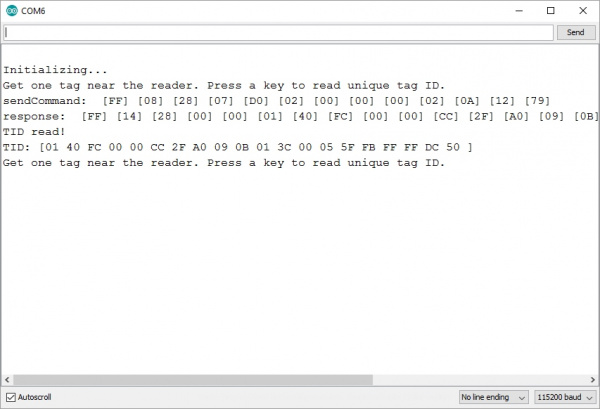Simultaneous RFID Tag Reader Hookup Guide
Example 9 - Read TID
TIDs are the truly unique IDs assigned to each tag (and are not editable). They are 20 bytes long so they're a bit unwieldy but if you need them Example 9 will show you how.
nano.enableDebugging(); //Turns on commands sent to and heard from RFID module
This example includes a new function called .enableDebugging(). This displays the commands sent to and responses from the RFID module. The counter function is .disableDebugging(). It's often helpful to see what commands are being sent to the module. Debugging also exposes how the module responded: Did it time out? Did it return an unknown response?
You can pass a port to .enableDebugging(). For example, nano.enableDebugging(Serial1); will enable and output debug messages to port Serial1. If you leave it blank debug messages will be piped to Serial by default.
When experimenting with features outside the scope of the Arduino library it is best to enable Transport Logging inside the URA to see what commands the URA is sending to the module. Within a new Arduino sketch send duplicates of the commands the URA is sending. The debug statements will help verify what you are sending and what was received.
